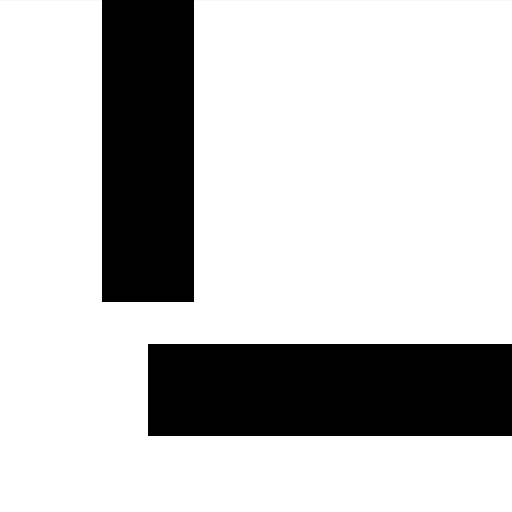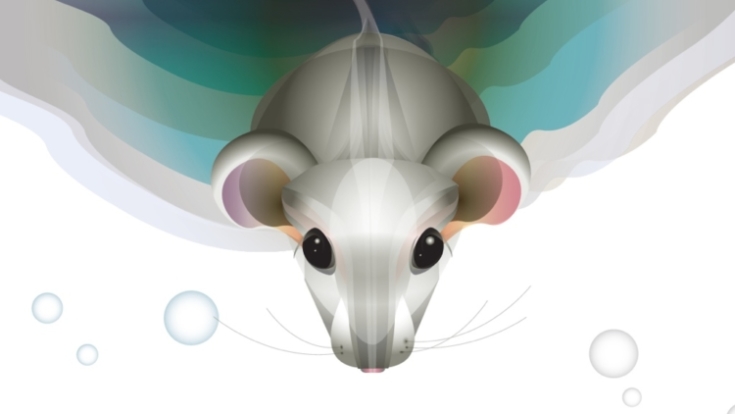
EMRG
EMRG specializes in computer graphics applications and cutting-edge research in the domain of computer graphics, user experience, creativity, but also in artificial intelligence and natural language processing.
Most of the EMRG research is based on competitively acquired funding, including funding agencies such as the Institute for the Promotion of Innovation by Science and Technology in Flanders, the Interdisciplinary Institute for Broadband Technology, and private companies.
EMRG is pronounced as emerge (ɪˈməːdʒ). Emergence or self-organization can be observed in for example ant colonies, the weather and the economy. It is also a common feature of generative art, art produced by algorithms and inspired by self-organization. A key theme in our research is the role of computers in (visual) communication. With the WWW availability of information has grown immensely and consequently computers are playing a dominant role in the way humans process information. Our aim is to promote the computer from a production tool to an emergent/creative partner that helps extract, process and present information. EMRG is passionate about teaching. We are internationally recognized for our lectures and workshops inspiring the next generation of digital innovators.
Current projects
Performative AI – an Unstable Alliance Between Bits and Body. (2021-2023)
Researchers : Frederik De Bleser, Lieven Menschaert, Ine Vanoeveren
This research explores how AI understands the materiality of body, space and time. The research project aims to bring AI into the artist’s practice by developing open-source tools and methodologies that make the domain more accessible and transparent. Through carefully self-assembled datasets and an intuitive visual understanding of algorithms, we can avoid the bias inherent in large-scale models and take ownership of our own “small AI.”
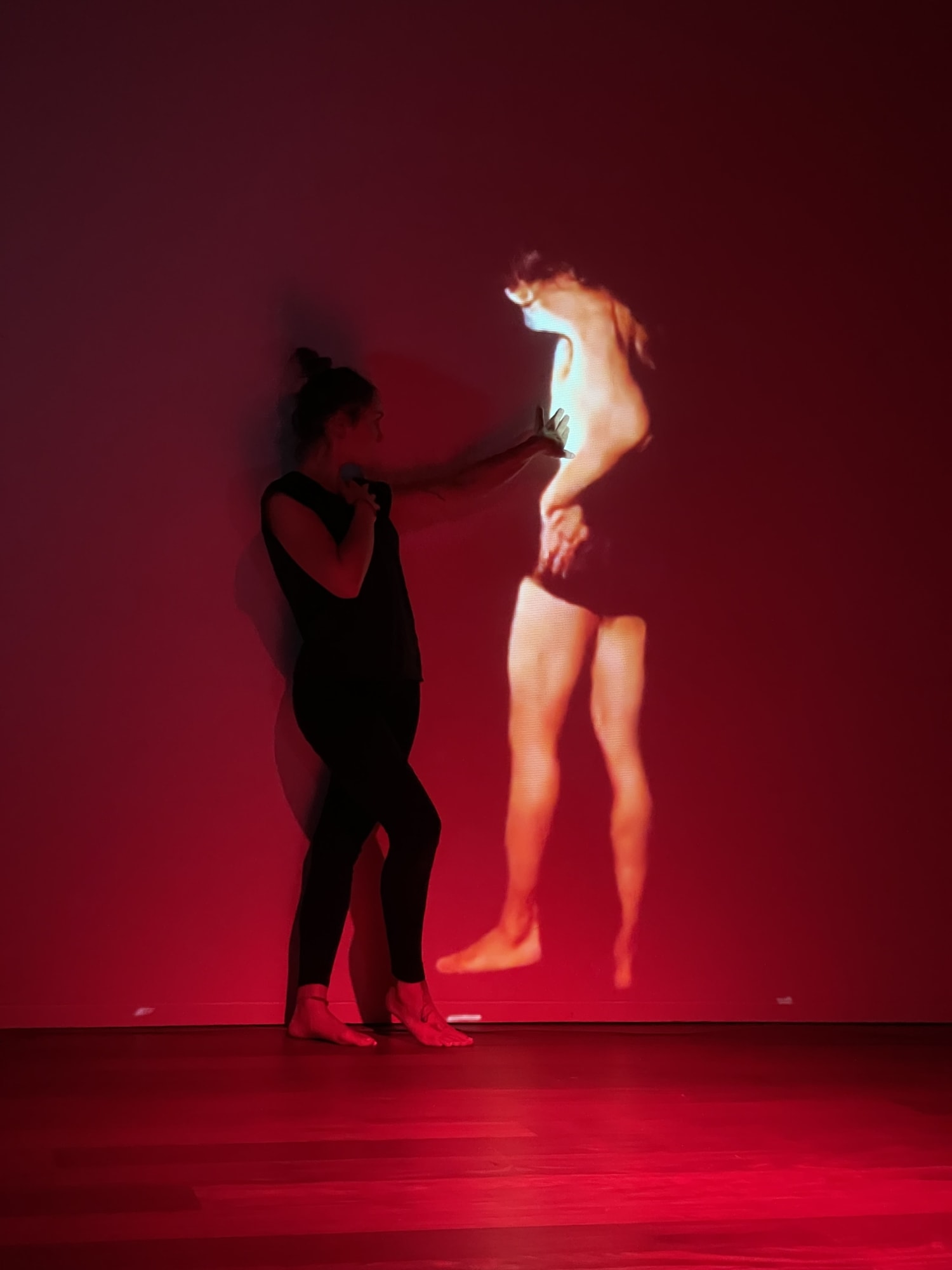
Past projects
Images of hate (2019-2021)
Researchers : Dr. Tom De Smedt & Tom Van Iersel
In the course of this project we intend to study the role of graphic design (image manipulation, design, typography, marketing) in polarization on online social media, and formulate appropriate responses to this kind of hateful propaganda in the form of counter narratives.
Parallel narratives, different elements and forms of representations and their effect on audience perception (2015-2020)
Researcher : Ali Baharlou
Parallel narratives, different elements and forms of representations and their effect on audience perception researches parallel narratives in film and how choice can lead to different destinies for the protagonist. The questions raised are how audience perceive these topics in parallel narratives and how filmmakers can change or manipulate the perception of choices, multiple paths and free will by diverse narrative elements, devices and different forms of representations.
The Algorithmic Gaze: democratizing AI for artists and designers (2019-2021)
Researchers : Dr. Frederik De Bleser en Lieven Menschaert
The applications of artificial intelligence have permeated our society in recent years. Consider speech recognition, translation software, fraud detection, cancer cell detection, facial recognition and self-driving cars. Many of those applications teach the computer to look at the world.
In this research project we want to explore the creative applications of AI by gaining insight into the artificial thinking process of the computer. How can we, by “deciphering” the algorithms, get a view of “The Algorithmic Gaze” – the image that the computer has of the world, and how does this view influence our own view of reality? Is it a method that can create a new kind of innovative images or styles? Can a computer algorithm guide a creative process? And how do we democratize this research by simplifying the complex procedures so that they become accessible to a broad group of non-technical designers and artists?
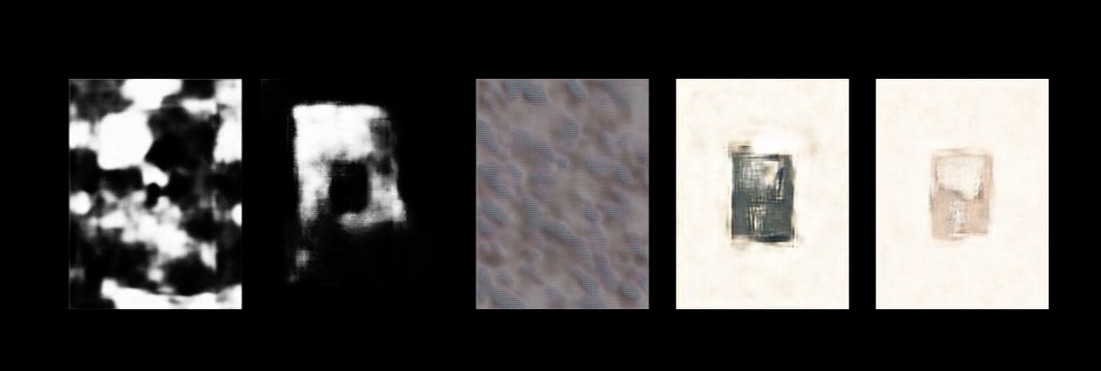
Interactive Fairytales (2015-2020)
Researchers : dr. in the arts Tom De Smedt, PhD candidate in the arts Ludivine Lechat
The aim of this PhD project of Ludivine Lechat, PhD candidate in the Arts is to study the effects of new media art (digital illustration inspired by nature) and interactive play on the major stressors of young patients. Can we reduce stress and improve the resilience of ill children by integrating relaxing and inspiring artwork in the hospital environment?
Under close supervision of healthcare professionals (prof. dr. Koen Norga, pediatric oncology, University Hospital Antwerp; prof. dr. Monica Dhar, biological psychology, Free University of Brussels), creativity research (dr. Tom De Smedt, St Lucas School of Arts), nursing staff, and in consultation with hospitalized children, I will examine visual aesthetics and narrative approaches that enhance the mental well-being of young patients.
The research will be conducted at the St Lucas School of Arts (EMRG), the children’s ward of the University Hospital Antwerp (UZA), and the Collaborative Antwerp Psychiatric Research Institute (CAPRI).
Nodebox
Researchers : dr. in the arts Frederik De Bleser, Stefan Gabriëls
EMRG is passionate about open source software. Most of our tools are free or have licenses interesting to artistic, scientific, non-profit as well as commercial organizations.
NodeBox is a Mac OS X application that lets you create 2D visuals (static, animated or interactive) using Python programming code and export them as a PDF or a QuickTime movie. NodeBox is free and well-documented.
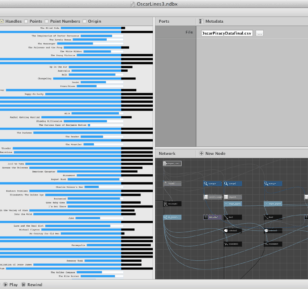
Visualize Your Data
Because of its unique approach, NodeBox is ideal for rapid data visualization. NodeBox can import many data formats such as Excel spreadsheets and you can write your own data importers and exporters.
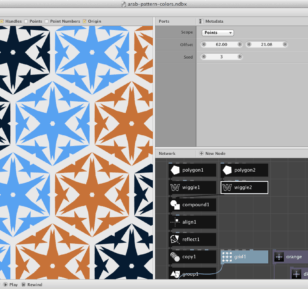
An Animated Partner
Every parameter in NodeBox can be animated. Animations can be exported as common movie formats or as a sequence of images.
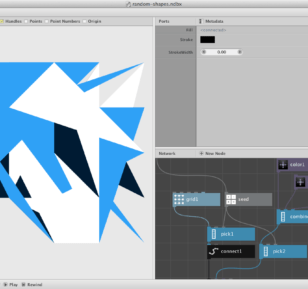
A Friendly Face
You want to explore generative design without learning the ins and outs of programming? Using its node-based interface, NodeBox makes generative design easy and fast.
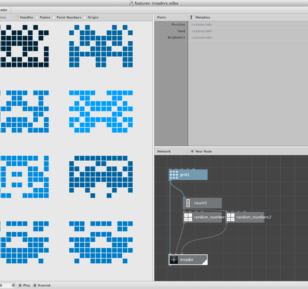
Peek Under The Hood
Using nodes doesn’t have to mean giving up expressive power. NodeBox makes it easy to customize the functionality of existing nodes or to build your own from scratch.
More details at nodebox.net
